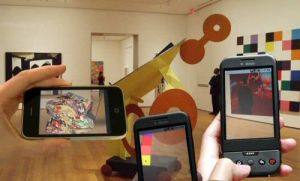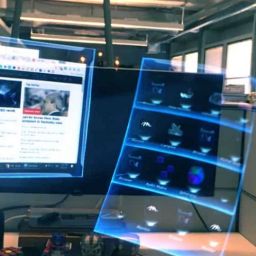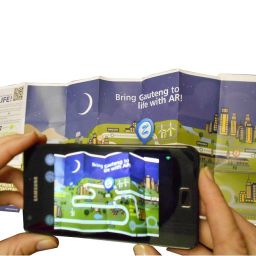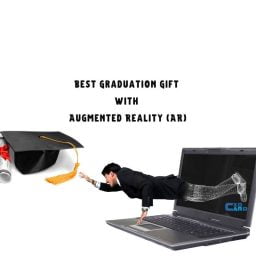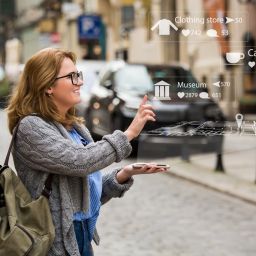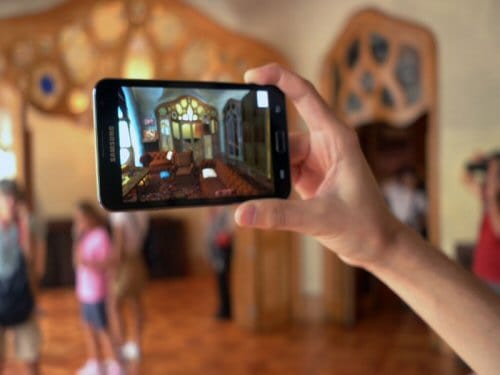
augmented Reality for museums
One of the first uses of augmented reality for museums is a DIY Augmented Reality Art Invasion at MoMA on October 9th, 2010 as part of Conflux Festival in Museum of Modern Art (MoMA) It was curated by artists Sander Veenhof and Mark Skwarek. In fact, it was an installation that lasted for a few hours. Then, the AR display was themed of “art and technology for the creative exploration of urban public space.”
Back in year 2010 people were becoming familiar with mixed realities. Easy to use AR tools have led to an explosion of virtual creativity in our public physical space. Recently, every major city square now hosts virtual sculptures. Actually, augmented reality has changed the scope of ‘public space’. In other words, combining this development and the fact that creative tools are turning many people into creative artists.
CxoCard application is an easy to use tool in various environments such as museums. The following is our last demo for Augmented Reality in Museums, art dis
CXOCARD Augmented Reality for Museums –
null
Therefore, some of the well known museums, that use augmented reality are as follows:
1- National Museum of Singapore, Singapore
National Museum of Singapore has created an experience called Story of the Forest. Japanese digital art collective teamLab created the installation. Indeed, story of the Forest is an immersive installation that transforms 69 drawings of Natural History Drawings into three-dimensional animations.
2- Smithsonian National Museum of Natural History, Washington, D.C.
Smithsonian’s oldest museum hall is officially enhanced with new technology in the Skin & Bones exhibit. The Bone Hall (an anatomy exhibit that opened in 1881 with Smithsonian’s first museum) still has many of the original skeletons. However, guests can use an application to overlay skin and movements onto the bones.
3- The Pérez Art Museum, Miami
In December 2017, PAMM worked with artist Felice Grodin. Together they created the first fully augmented reality-powered art exhibition, called ‘Invasive Species’. The exhibition is a comment on the fragility of our ecosystem and the threat of climate change. It transports visitors to a future version of the building, taken over by invasive species.
4- Heroes and Legends, Kennedy Space Center, Florida
Augmented reality technology brings holograms of astronauts to life. The entire exhibit dedicated to the men and women at the heart of America’s space program. Interactive objects where you can use the AR app are placed in the museum. It allows us to view the early astronauts and NASA legends and give them a chance to tell their stories.
5- Jinsha Site Museum, Chengdu, China
More than 3,000 years ago, an ancient civilization known as Shu lived in Chengdu in China. Shu people would gather in Jinsha, to pray and offer sacrifices to their gods. Visitors to Jinsha now can use an app to explore these relics, see how they look in 3D, and learn more about them.
6- The Art Gallery of Ontario, Toronto![augmented Reality for museums]()
In July 2017, the AGO worked with digital artist Alex Mayhew to create an AR installation called ReBlink. Mayhew re-imagined some of the existing pieces in the collection. Finally, this gave visitors the opportunity to view them in a new light. Visitors use their phones or tablets to see the subjects come alive and transported to our 21st-century reality.
7- England’s Historic Cities, England
A new app called England’s Historic Cities uses augmented reality for tourists to interact with heritage sites across the country. There are 12 in total spread across England. Finally, at each location, famous historical figures serve as your virtual guides. Such as William Shakespeare, the Venerable Bede, Sir Joseph Banks, and a cast of colorful figures take you on a journey through the tunnels of history.
8- Casa Battlo, Barcelona
Casa Batlló offers a Video Guide with augmented reality, virtual environments and 3D animations. It guides you through the house and show the special details of the design along with the furniture of the era. Eventually, Casa Batlló has opted to make use of new technologies in a big way,. They have used a tablet that detects the user’s position at every moment. Briefly, this technology also allows visitors to understand Gaudí’s symbols and their application in the interior design of every part of the house.
Lastly, imagine being surrounded by a world of ghosts, things that aren’t there unless you look hard enough, and in the right way. Considering the improvement of augmented reality technology, the museums are definitely using it to their advantage.


